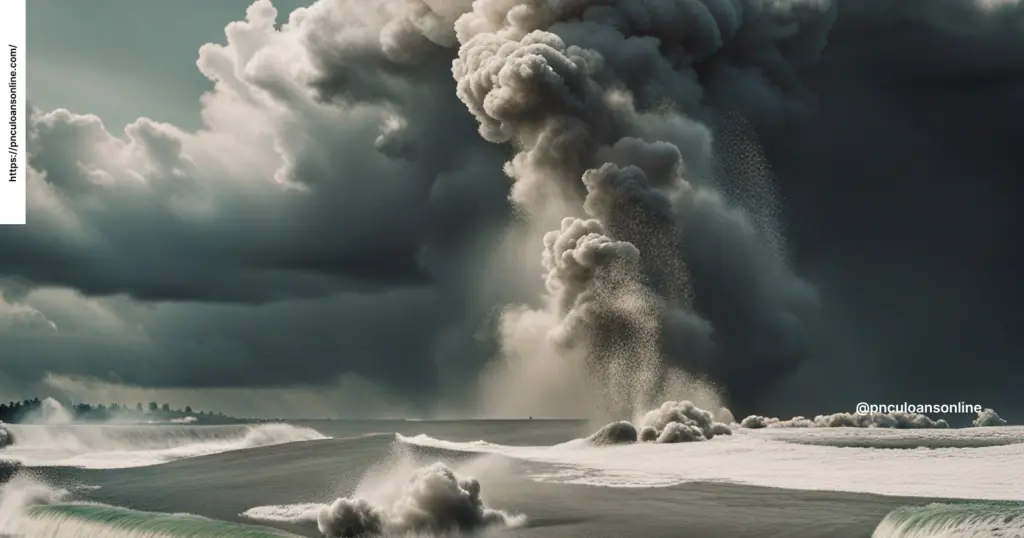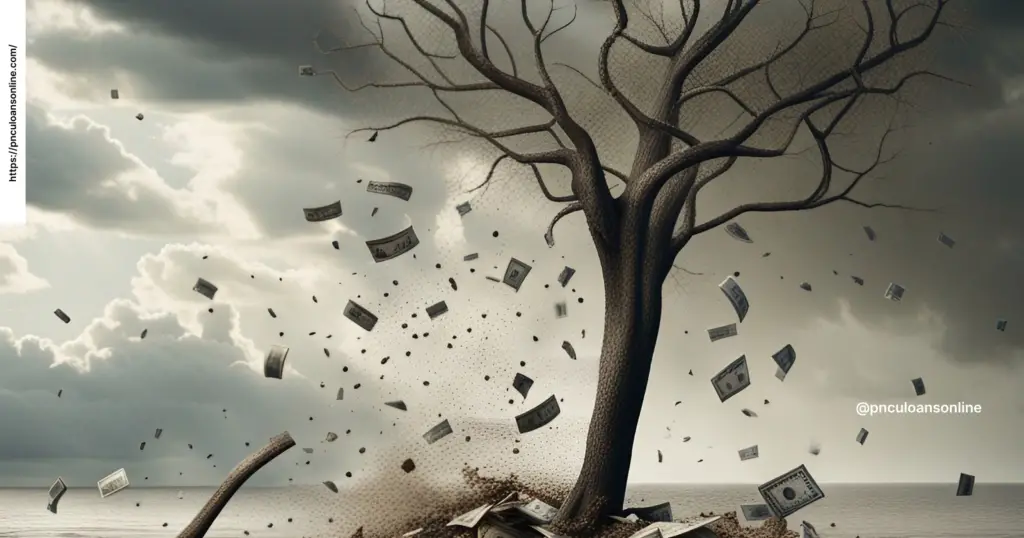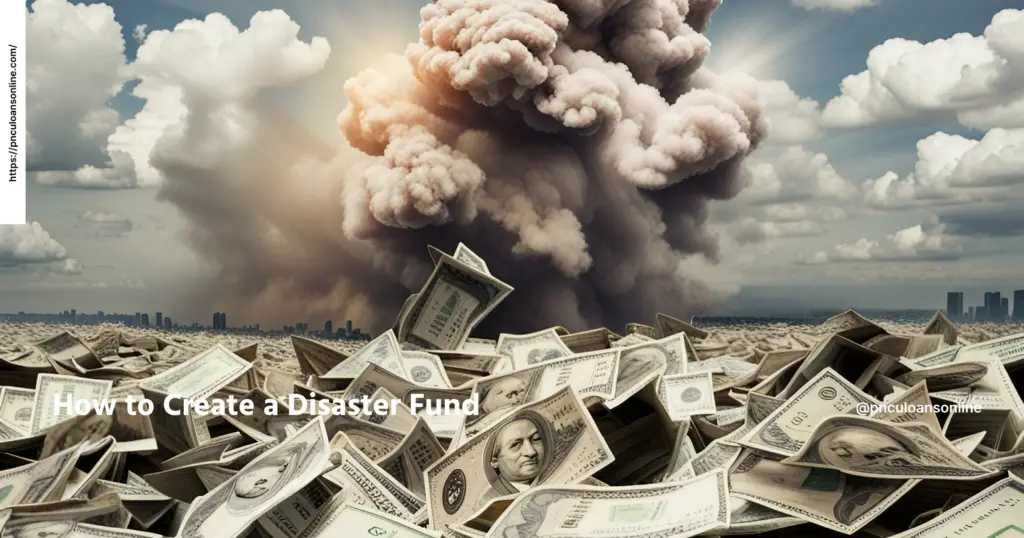Imagine discovering your property damaged by a natural disaster or experiencing a sudden financial crisis as a result of an unplanned incident one day. Because of the unpredictability of life, having a catastrophe fund might provide you piece of mind when things get tough. This post will discuss the value of setting up a disaster fund and offer helpful advice on how to do so. So let’s get started!
Understanding Why a Disaster Fund Is Necessary
Because there are so many unknowns in life, it’s imperative to be ready for unanticipated situations. Having a designated fund can help you get through difficult times without succumbing to financial stress, whether it’s a job loss, medical emergency, or natural disaster. A disaster fund acts as a safety net, giving you access to cash to pay bills right away and get back on your feet following a crisis.

Taking Stock of Your Financial Situation
Consider your existing financial condition before you begin to accumulate a disaster reserve. Examine your earnings, outgoings, and savings carefully. Analyze your monthly spending and pinpoint places where you might cut back on discretionary spending to raise money for your emergency fund. It’s a good idea to evaluate your insurance policies to be sure they provide sufficient protection in case of crises.
Choosing realistic objectives
It’s time to create reasonable goals for your disaster fund after you have a thorough picture of your financial condition. Decide how much you want to save first. Aim for at least three to six months’ worth of living expenses as a general guideline. However, you could wish to aim for a larger fund to offer more security, depending on your circumstances and risk tolerance.
Opening a Different Account
Establish a separate account specifically for emergency finances in order to prevent using your disaster fund for regular needs. Open a high-yield savings account or a money market account to keep your money accessible while earning competitive interest rates. Automate recurring deposits into this account to guarantee steady advancement toward your savings objective.
Establishing Your Emergency Fund
Discipline and dedication are needed to build a catastrophe fund. Start by allocating a portion of your income only to the fund. Paying your expenses and treating it like a cost are both non-negotiable. Reduce wasteful spending and put the money saved toward your emergency fund. Selling your unwanted belongings or starting a side business are further ideas to increase your savings.
Budgeting to increase savings
Budgeting is essential for boosting the growth of your emergency fund. Make a thorough budget that places a priority on necessities and allots a percentage of your income to savings. Keep careful tabs on your spending, pinpoint areas where you can make more savings, and transfer those funds to your emergency fund. Small sacrifices made today can have a big impact later on.
Techniques for Quickening the Savings Process
Here are a few tactics to take into account if you want to grow your catastrophe fund more quickly:
Increase your income by taking on a part-time work, negotiating a raise, or looking into career progression prospects. The extra money can be put straight into your emergency fund.
Reduce debt by paying off high-interest bills as quickly as you can. You’ll have more money available to contribute to your savings if you lower the interest you pay.
Reduce non-essential spending: Make a list of discretionary costs that can be temporarily cut or eliminated. Find cheaper ways to indulge in your hobbies or think about replacing pricey habits.
The Value of Consistent Donations
When constructing a disaster fund, consistency is essential. Regardless of the situation, make it a habit to routinely donate to your money. It’s important to continue saving, even if you can only afford a modest amount each month. These consistent payments will accumulate over time and assist you in reaching your financial objectives.
Refusing to Draw from the Fund Despite the Temptation
It’s crucial to avoid the impulse to use money from your catastrophe reserve for non-emergency costs. Keep in mind that this fund is there to safeguard you against unanticipated emergencies. Keep a rigorous budget and keep your regular spending separate from your emergency fund. By doing this, you’ll protect your fund’s integrity and make sure it’s available when you need it most.
Reviewing and modifying as necessary
It’s crucial to routinely review your catastrophe fund as your circumstances change. Your savings plan may need to be adjusted as a result of variables like salary variations, changes in living expenses, or new financial objectives. To keep your fund in line with your current demands, be proactive and evaluate it frequently.
Getting Expert Advice
Don’t be afraid to seek expert assistance if you have questions about setting up a disaster fund or if you need help efficiently managing your finances. Financial consultants can help you develop a thorough financial strategy and offer insightful advice appropriate to your situation. They can suggest ways to maximize your savings, reduce your debt, and guarantee that your emergency fund complies with your long-term financial objectives.
Creating a Disaster Fund Has Emotional Consequences
Although establishing a disaster fund is largely a financial task, it’s important to take the emotional component into consideration as well. In unpredictable times, tension and anxiety can be reduced by the assurance that comes with having a safety net. Having a planned catastrophe fund also frees you up to concentrate on recovery and reconstruction rather than being distracted by monetary worries.
Meeting Obstacles and Maintaining Motivation
It might be difficult to build a disaster fund when there are competing financial demands or unforeseen setbacks. You can overcome these obstacles, though, by maintaining your motivation and attention on your objectives. Remind yourself of the value of being financially prepared and the advantages of having a designated fund in the long run. To keep motivated on your trip, celebrate success along the way and enlist the help of loved ones.
Children Should Be Taught About Financial Preparedness
It is important to teach future generations the importance of being financially prepared. From a young age, instill in your kids the value of saving money and being ready for crises. Encourage them to contribute a percentage of their wages or allowance to a personal emergency fund. By forming these habits in them at a young age, you are giving them the foundational life skills they will need in the future.

Benefiting from a Disaster Fund
Beyond financial security, a well-established disaster fund has several advantages. It gives you a feeling of empowerment and self-reliance since you know you have the resources to overcome unforeseen obstacles. Additionally, it promotes long-term financial planning and a pro-active, responsible approach to personal money. A catastrophe fund is, in the end, a safety against life’s risks and an investment in your serenity.
Conclusion:
Building financial resilience requires taking the necessary steps to establish a disaster fund. You can create a safety net to guard yourself and your loved ones during trying times by realizing the necessity for such a fund, setting achievable goals, and employing successful tactics. Keep in mind that discipline and consistency are vital. Start small, remain devoted, and see your disaster fund expand, giving you the protection and peace of mind you deserve.
FAQs:
Why do I require a catastrophe fund?
A catastrophe fund acts as a source of funding amid unanticipated emergencies. It gives you the means to pay your immediate bills and get back on your feet following a disaster. Having a designated fund can reduce stress and anxiety, allowing you to concentrate on healing and rebuilding without having to worry about money.
How much should I put aside for emergencies?
Your unique situation and level of comfort will determine how much money you should put aside for emergencies. Aiming for at least three to six months’ worth of living expenses is a standard rule of thumb. However, take into account elements like your family size, level of financial stability, and any particular hazards you may have. For greater protection, you can decide to save more money.
Can I utilize my money for emergencies as a catastrophe fund?
Yes, you can use your emergency funds as a disaster fund. To prevent using emergency funds for regular needs, it’s crucial to open a separate account just for them. You can make sure the money is there when you need it most by keeping it separate.
How can I continue to be inspired to make regular contributions to my catastrophe fund?
Maintaining the drive to make regular contributions to your catastrophe fund is essential for its expansion. Here are some pointers:
Establish clear savings objectives and monitor your progress. Observing your investment increase may be really inspiring.
Automate your savings by setting up regular withdrawals from your checking or paycheck into your emergency fund.
Keep in mind the security and peace of mind that come with having a well-prepared fund.
Celebrate success along the way to maintain motivation and give yourself rewards for your accomplishments.
What if I already have debt? Should I put establishing my emergency savings ahead of paying them off?
Building a disaster reserve while managing current bills might be difficult. In general, finding a balance between the two is advised. To begin, pay the bare minimum toward your obligations to avoid penalties or late fees. Allocate some of your income to your disaster fund at the same time. After you’ve created a fundamental emergency fund, you might think about allocating more money to paying down debt. It’s important to evaluate your particular financial status and set priorities based on your personal demands and objectives.

